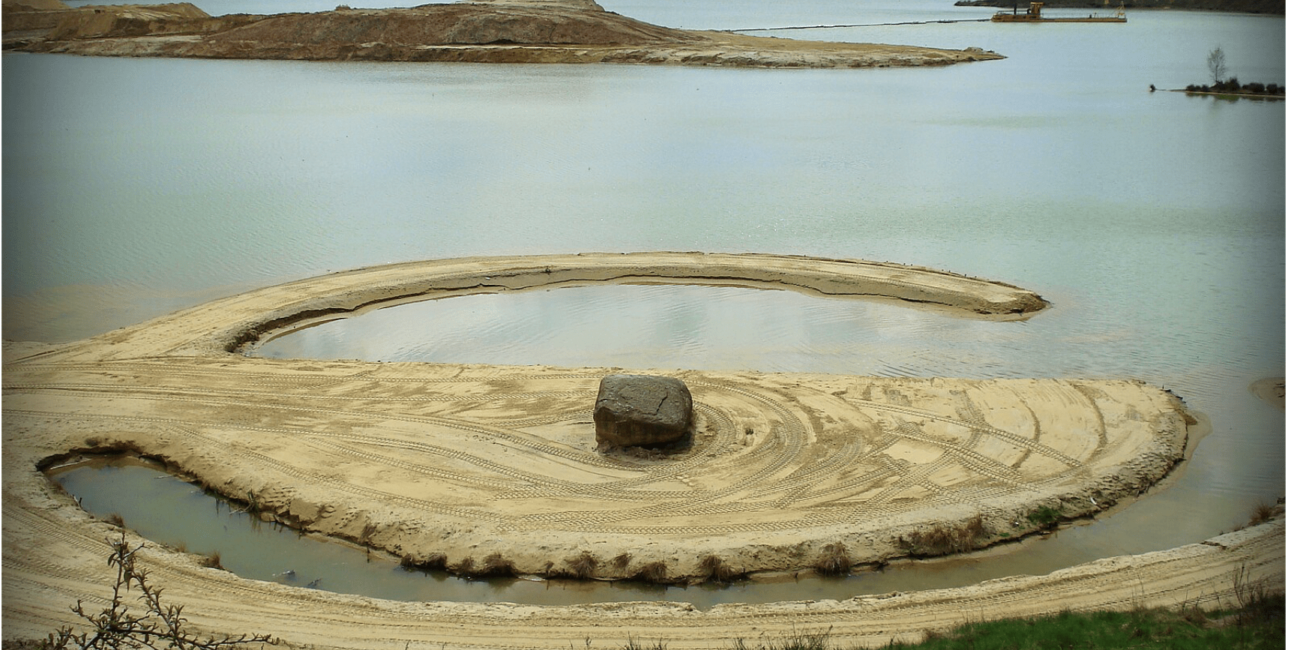After years of restricted access, visitors were once again allowed to experience Broken Circle/Spiral Hill, the land art installation by American artist Robert Smithson, during guided tours this past weekend. The site, located in a former sand quarry near Emmen, was accessible only on Saturday and Sunday through sold-out bus excursions, NOS reports.
Smithson’s Broken Circle/Spiral Hill, created in 1971, is the only work of his located outside the United States and one of the first examples of large-scale land art in the Netherlands. The project was commissioned for the 1971 exhibition Sonsbeek buiten de perken. Before he could complete the work, Smithson died in a plane crash during a scouting mission for another land art project in Texas. The installation was completed posthumously by his wife.
The artwork consists of two main features: Spiral Hill, a spiral-shaped path that leads to a grassy hilltop, and Broken Circle, an artificial peninsula built into a circular offshoot of a lake with a large glacial boulder placed at its center. From the top of Spiral Hill, visitors can look down onto Broken Circle.
The site sits on private property belonging to the Zand- en Exploitatie Maatschappij Emmen (Emmen Sand and Extraction Company). Access to the area had been strictly prohibited for years due to its location in the active sand excavation site. Though still private, limited excursions have now been approved for 2025.
Recently, the entire artwork was designated a provinciaal monument, a provincial heritage site. A separate application for national heritage status is still under review.
However, visitors can no longer view the land art in its original state. Over the years, rising groundwater levels have submerged parts of the artificial landmass. From the base of Spiral Hill, Broken Circle is no longer visible. The full view is only revealed from above.
“The view from Spiral Hill over Broken Circle is incredible. You can even see fish swimming through the artwork,” said a visitor from Wageningen to NOS, noting the clarity of the blue-green water. “If the water ever recedes, we’ll definitely come back again.”
Anne Reenders of Land Art Contemporary, the organization responsible for managing the site, explained that fluctuating water levels have long impacted the artwork’s visibility.
“A few years ago, we had the opposite problem. The water level was so low that Broken Circle was completely dry,” Reenders told NOS. “We’re not going to start restoration yet. First, we’ll observe what the water does. But whether it’s underwater or exposed, maintenance is necessary.”
This weekend’s excursions were the first public visits allowed in years, and both days sold out quickly. Visitors expressed enthusiasm and awe at the scale and significance of the piece.
“This is an iconic work in land art. I’ve always wanted to see it with my own eyes. And now it’s finally possible again,” a man from Utrecht told RTV Drenthe. “It’s impressive and much larger than you’d expect from photographs.”
From the hilltop, visitors could take in the full scope of the work, set against the altered landscape of the former quarry. Though changes in water level have distorted the piece from its original form, many said the natural transformations added new layers of meaning.
“Art isn’t something you just stick in a museum and look at once,” a woman standing atop the grass-covered Spiral Hill told NOS. “You have to do something with it. It’s woven into life.”
Land Art Contemporary plans to organize 14 additional excursions to the site this year. The next visits are scheduled for the weekend of May 10 and 11. More trips are also planned for Open Monumentendag in September.




No Comment! Be the first one.